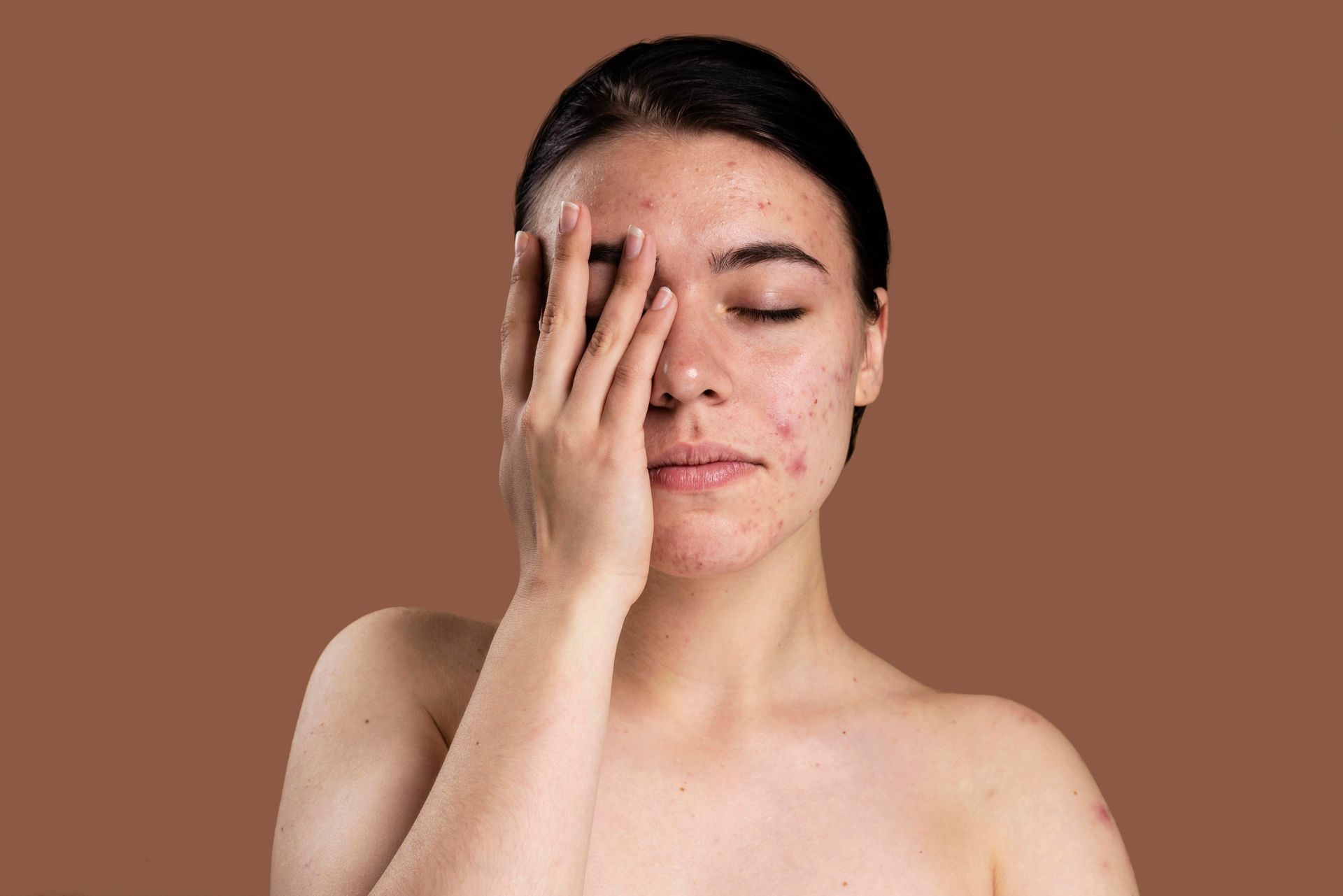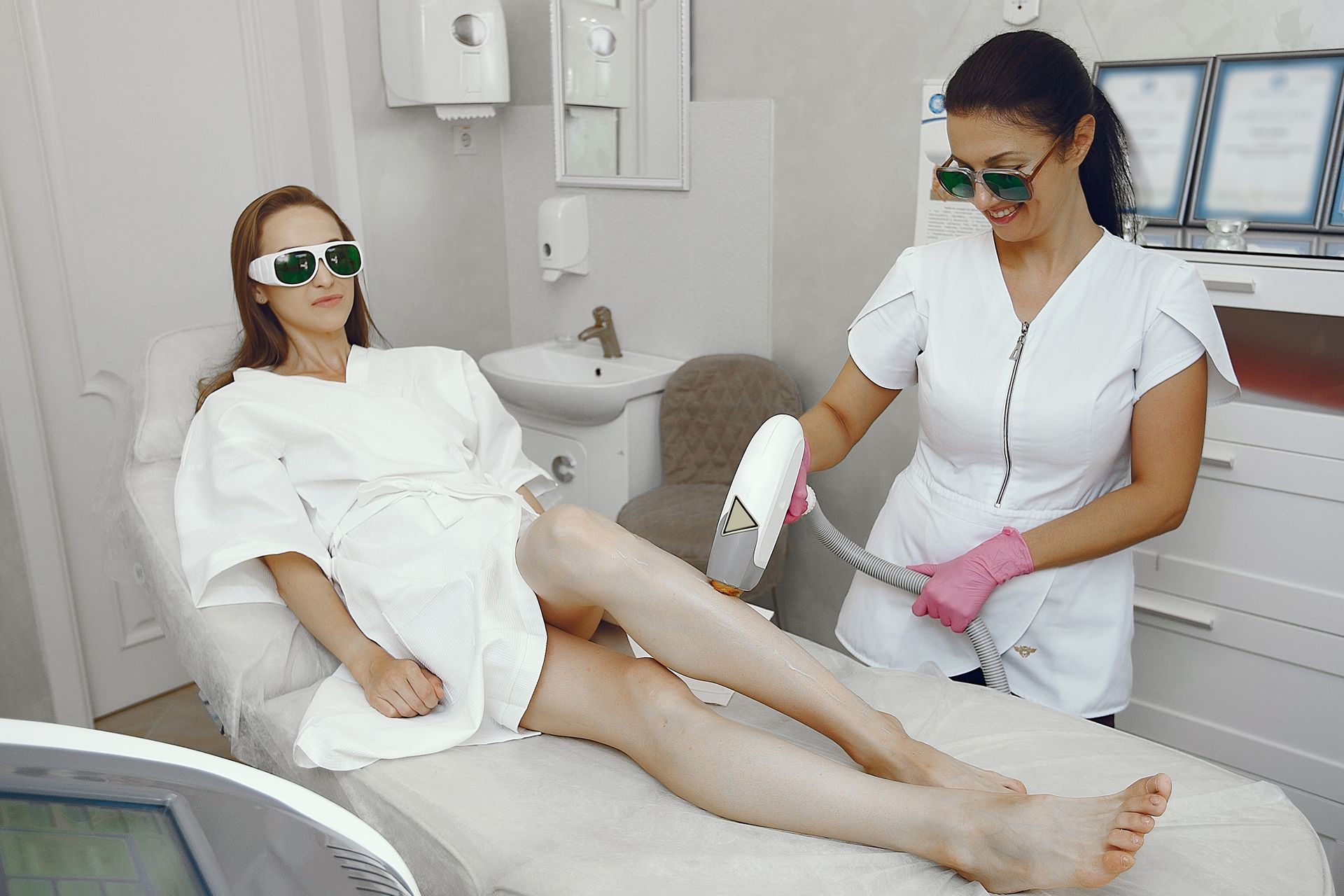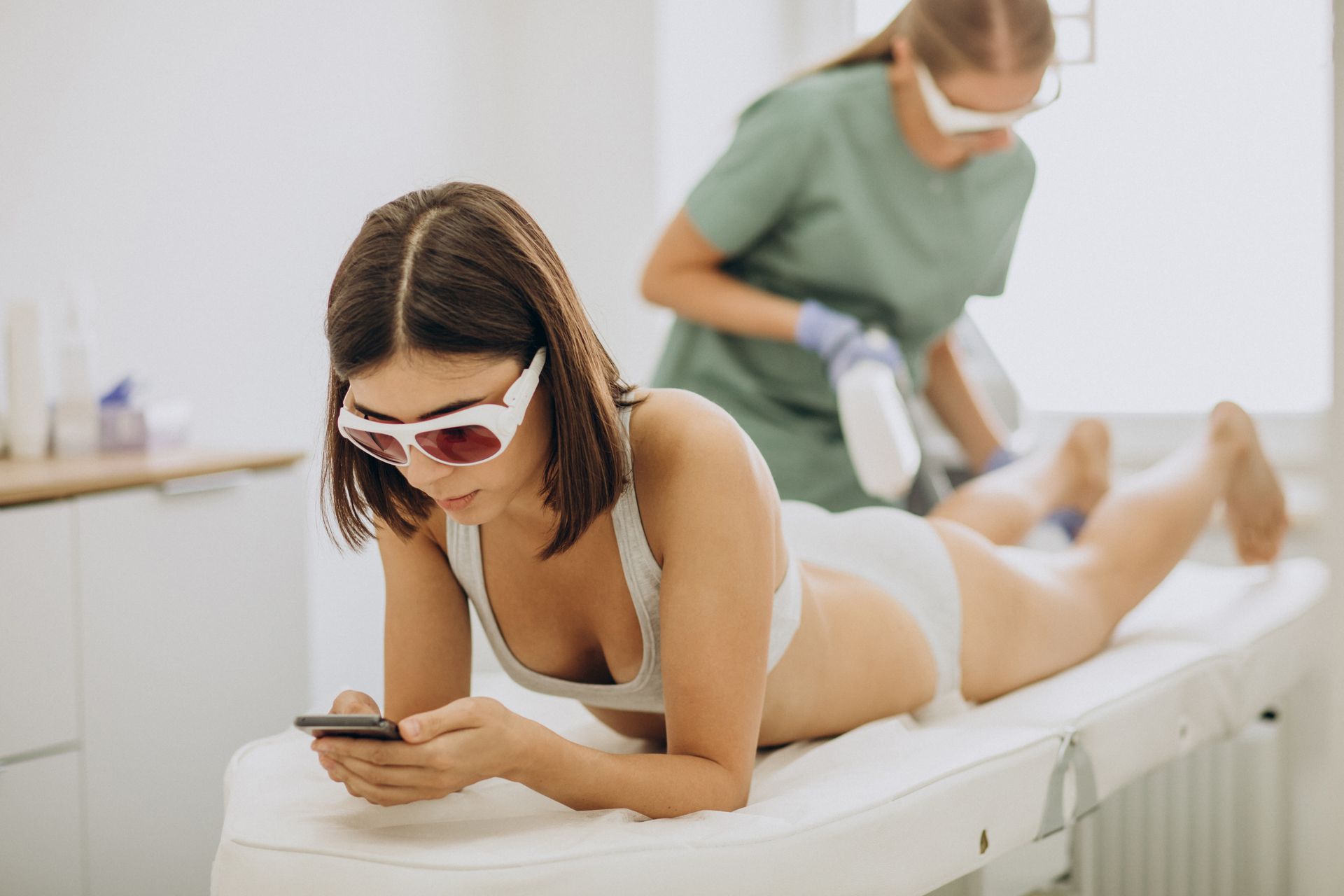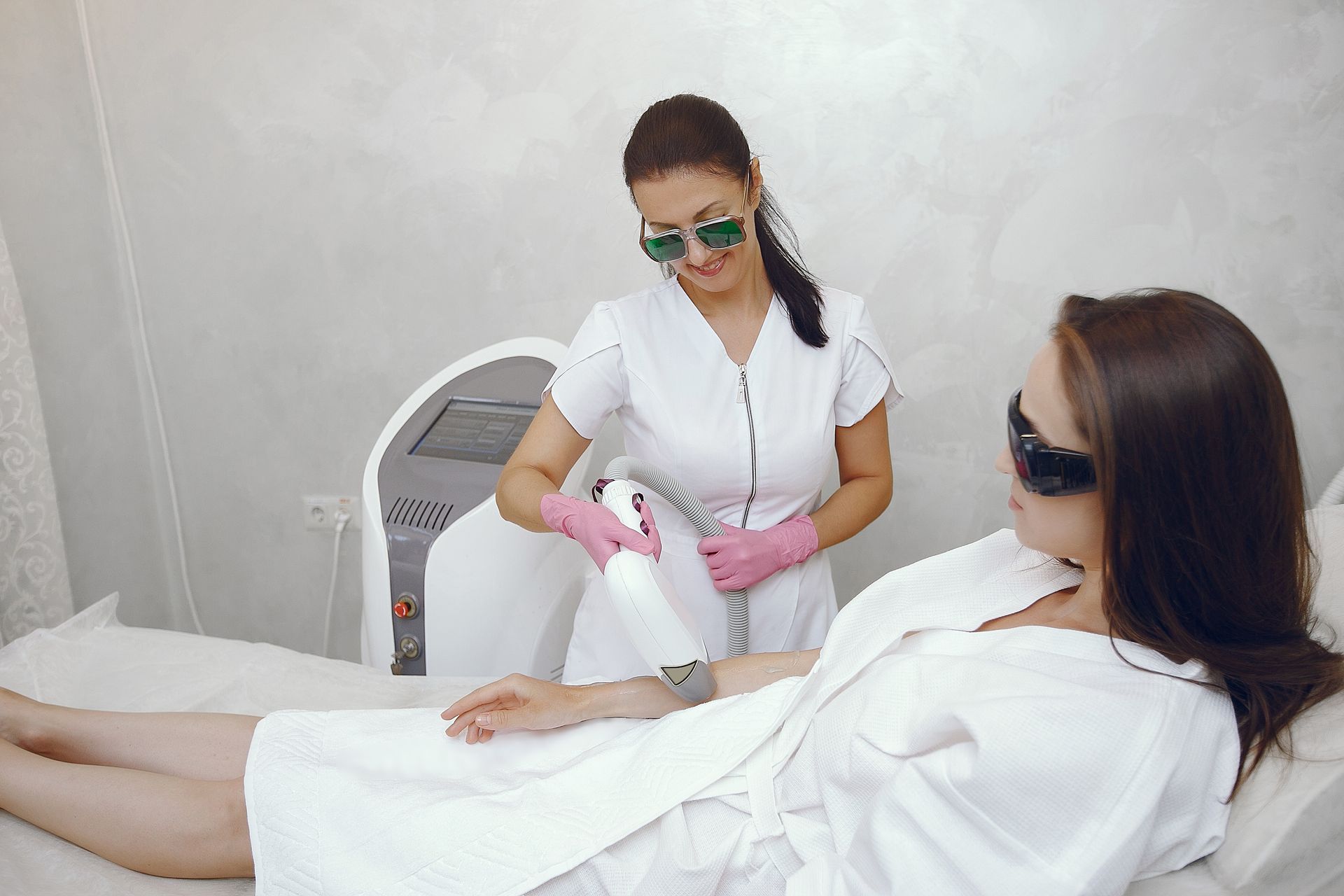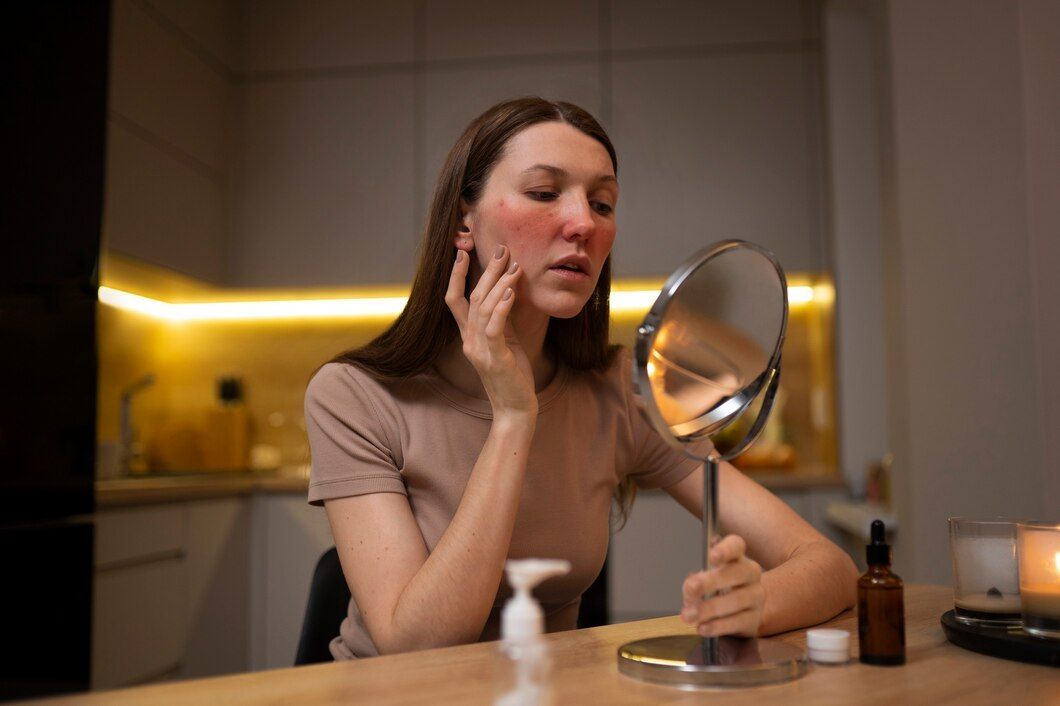10 FAQS ABOUT FACE LASER HAIR REMOVAL
Whether you're tired of tweezing your upper lip or constantly battling chin fuzz, facial laser hair removal promises a more permanent solution. But with so many questions floating around online, it's easy to feel overwhelmed. So, let’s tackle the most Googled questions — with honest, comprehensive answers that go beyond the usual fluff.
1. Is Face Laser Hair Removal Really Safe? Or Am I Signing Up for Trouble?
Yes, facial laser hair removal is considered safe for most skin types when performed by a certified and experienced technician. The laser emits concentrated light that targets the melanin (pigment) in hair follicles, destroying them at the root without harming the surrounding skin.
However, because facial skin is more delicate and frequently exposed to the sun, safety depends heavily on the quality of the laser used and the technician’s skill. Clinics should conduct a patch test and ask for your medical history. People with active acne, skin infections, or photosensitivity (sensitivity to light) may not be suitable candidates unless pre-treated.
Pro tip: Always choose clinics that use FDA-approved devices like diode or Nd:YAG lasers.
How many sessions brazilian laser hair removal?
2. Does It Hurt More Than Waxing? What Does It Actually Feel Like?
Pain is subjective, but most people describe the sensation as a quick snap or zap, like a rubber band flicking against your skin. It’s not exactly a spa experience, but it’s far less painful than waxing, especially over time. The discomfort reduces as hair becomes finer with each session.
Clinics often use cooling systems or numbing creams to reduce discomfort. Areas like the upper lip or between the eyebrows may feel more sensitive than the cheeks or jawline due to thinner skin.
3. How Many Sessions Will I Need Before I See Results?
Facial laser hair removal isn’t a one-and-done treatment. Hair grows in three phases—and lasers only target follicles in the active (anagen) phase. That’s why you need 6 to 8 sessions, spaced 4 to 6 weeks apart, to catch every follicle at the right time.
You’ll start seeing a reduction in hair density after 2 to 3 sessions, and the full results become visible after the entire course. Some people need touch-up sessions every 6-12 months, especially if they have hormonal hair growth.
4. Is the Hair Gone Forever or Will It Grow Back?
Laser hair removal offers long-term hair reduction, not guaranteed permanent removal. You’ll likely experience 80–90% reduction in visible facial hair. Some fine or light hair may still grow back, but it’s usually softer, lighter, and less dense.
Factors like hormones, medication (e.g., PCOS, thyroid disorders), or genetics can trigger regrowth. That’s why maintenance sessions are often needed every few months.
5. Can Everyone Get It? What About Dark Skin or Light Hair?
Here’s where things get technical. Lasers target melanin (dark pigment), so they’re most effective on people with light skin and dark hair. But thanks to modern technologies like Nd:YAG and Alexandrite lasers, those with darker skin tones can now safely undergo the treatment — as long as the clinic uses the right laser type.
However, very light blonde, gray, or red facial hair is harder to treat since there's less pigment for the laser to detect. If you fall into this category, electrolysis might be a better option.
6. Which Facial Areas Can I Treat? (And Which Should I Avoid?)
You can safely treat most parts of your face, including:
Upper lip
Chin
Sideburns
Jawline
Cheeks
Neck
Between the eyebrows
What you shouldn’t do? Laser near the eyes, like the eyelids or right under the lower lash line. The risk to your vision is too high — even with protective goggles.
7. What Should I Do Before and After the Treatment?
Before Your Session:
Avoid sun exposure and tanning beds for 2 weeks
Don’t wax, pluck, or thread the area — only shaving is allowed
Skip active skincare products like retinol, AHAs, or salicylic acid
Shave the treatment area 24 hours prior
Aftercare Musts:
No sun exposure or makeup for 24–48 hours
Use aloe vera or cold compress if you experience redness
Avoid workouts, saunas, or hot showers for a day
Apply broad-spectrum SPF religiously
Poor aftercare can lead to pigmentation, irritation, or ingrown hairs — so follow instructions carefully.
8. What Are the Side Effects? Should I Be Worried?
The most common side effects are:
Redness and mild swelling (resolves within a few hours)
Slight skin sensitivity or a warm sensation
Rare but possible risks include:
Hyperpigmentation (dark spots) or hypopigmentation (light patches)
Burns or blisters, usually caused by inexperienced technicians
Temporary acne flare-ups or ingrown hairs
Most issues can be avoided by choosing a reputable provider and sticking to the aftercare plan.
9. Can I Wear Makeup Right After My Session?
Ideally, no makeup for 24 hours. Your pores are open, and your skin is more sensitive — applying foundation or concealer right after treatment increases your risk of clogged pores or breakouts.
If you absolutely must wear something, go for non-comedogenic, mineral-based products and keep it light.
10. Is It Safe During Pregnancy or While Breastfeeding?
There’s no definitive research proving that laser hair removal harms pregnant or breastfeeding individuals — but most clinics won’t perform it during pregnancy out of caution. Your hormones fluctuate wildly during this time, which can also affect hair growth and skin sensitivity.
Best to wait until after delivery and hormone stabilization before starting your sessions.
Face Laser Hair Removal: Busting 5 Common Myths
Myth 1: Laser hair removal causes more hair to grow
Nope. Laser destroys the follicle — it doesn't stimulate it. Some people experience new hair growth due to hormonal issues, not the laser itself.
Myth 2: It’s only for women
Facial laser hair removal is popular among all genders. Men often treat areas like the neck, cheeks, or unibrow to maintain a clean-shaven look or reduce razor bumps.
Myth 3: You only need one session
False. Hair grows in cycles, so multiple sessions are required. If someone offers you a “one-time miracle,” walk away.
Myth 4: It’s unsafe for dark skin
That was true with older lasers — not anymore. Today’s Nd:YAG lasers work safely on deep to dark skin tones, as long as the technician knows what they’re doing.
Myth 5: It's full of harmful radiation
Laser hair removal uses non-ionizing radiation, which is not cancer-causing or harmful. It’s a controlled, skin-safe light treatment — not a microwave.
Final Thoughts
Facial laser hair removal is a game-changer for anyone looking to ditch razors, waxing appointments, or constant tweezing. With the right technician, proper prep, and realistic expectations, you can enjoy smooth, hair-free skin with minimal hassle. Just remember: do your research, ask questions, and always choose expertise over a cheap deal.

